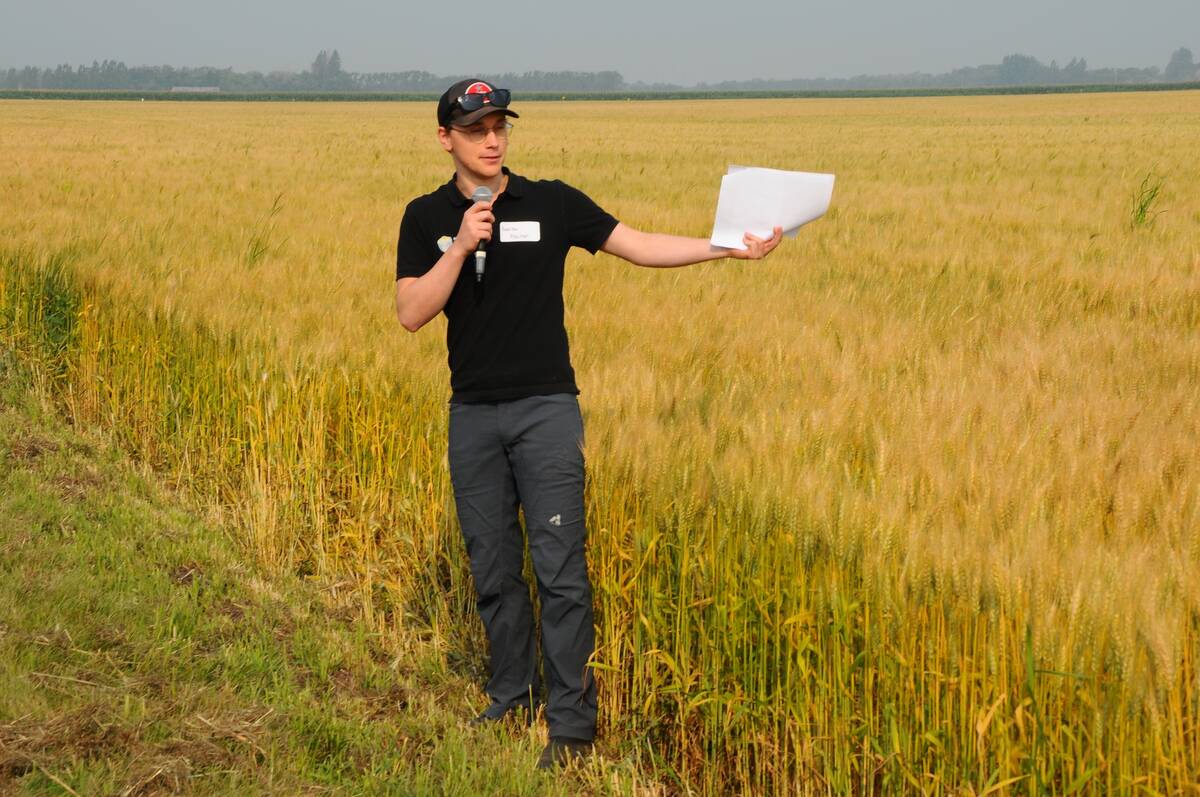Andrew Doerksen of Beaver Creek Farms just north of MacGregor, Man., became involved with the On Farm Research Network program about 10 years ago.
He and his partners were pleased enough that they’ve been active participants ever since. In fact, they’re conducting trials this year on wheat, soybeans and canola.
“We got started by working with a split nitrogen application in corn,” he said.
Read Also

Why feds imposed EV tariffs
Moe and Kinew have a fight on their hands when it comes to eliminating the EV tariff. Canada has to worry about pissing off the U.S. and Mexico and hundreds of thousands of auto workers.
“Based on that research, we stopped split applications of nitrogen in our corn and we’ve also reduced our corn seeding rate.”
The first test plots set up on Beaver Creek Farm showed that the results for the split application in corn was not consistent enough to continue. Other work showed corn yields could be sustained with a lower seeding rate.
The farm changed some of its practices and is now spending less time and money while maintaining good yields, thanks to what it has learned through on farm research.
“What appealed to us about working with the On Farm Research Network was that we were seeing data driven research that was unbiased and we were able to see it on our own farm,” he said.
“That was very exciting for us because we have a lot to learn, and we want to grow as farmers.”
The program is offered by Manitoba’s three major grower organizations: the Manitoba Crop Alliance, the Manitoba Pulse and Soybean Growers (MPSG) and, most recently, the Manitoba Canola Growers Association.
“It really brings small plot research to the field scale and that’s what we’re trying to do,” said Andrew Hector, an agronomist with the Manitoba Crop Alliance.
“Small plot research trials are a metre-by-metre type of thing, but research on the farm brings that to this large scale.”
Farmers are familiar with the first stage of science-based agricultural research. A problem is identified, a possible solution is proposed and a small plot is set up to see if it works. It follows the scientific method — hypothesis, experiment, results, analysis and conclusion.
This academic phase may tell researchers how a crop treatment will work under very tightly controlled conditions, but it doesn’t tell them much more than that.
The next phase is to try it in a larger plot to see if it works under the more variable conditions that are found in a real farm field.
“The farmer directors of MPSG were seeking a source of information that was a bit more practical and applicable to the farm,” executive director Daryl Domitruk said.
“The work done at research stations and universities is undeniably important, but it is, as we say, upstream, a bit less applicable to farmers. The idea was that we could engage with farmers and entice them to to set up a valid scientific study on their farm.”
Added Hector: “Since 2016, Manitoba Crop Alliance has had about 400 trials with a number of different protocols for all our crop types.… I’m guessing Manitoba Pulse and Soybean Growers has had more than that, and the Manitoba canola growers are catching up. So, for commodity organizations, it’s a way to invest on small research, but also bringing it to the field scale for farmer-members.”

So how does the process work? As with any scientific study, it starts with a problem. Who better to identify that than farmers?
“We start by developing farmer-focused research questions by meeting farmers at events, field days, at winter extension events or through agronomists,” Hector said.
“The research question determines what data we try to collect.”
Hosting a trial shows farmers how well certain products and practices will work on their land.
The test is conducted under the supervision of an agronomist using the formal scientific method.
Three randomized test plots up to 1,000 feet long and one combine header wide are surveyed. Seeding and harvest are done with the farmer’s equipment. The field research is done by the agronomist at no cost to the hosting farmer. The samples are gathered and the numbers crunched.
“Then, at the end of the season, you get a really nice report, coupled with the yield data, aerial imagery and economic analysis, all of which can really help guide your management decisions,” said Chris Forsythe, MPSG’s production agronomist.
“It’s personalized and customized for your trial on your farm.”
It gets even better. Data generated in all trials are summarized in a province-wide report that anyone can find and download.
“The On Farm Network book that they compile every year is in a format where you can flip it open and have a look when you’re sitting at the breakfast table,” said MPSG agronomist Wendy McDonald.
“The whole point is that someone like me is able to take on that research and boil it down to ‘farmer speak’ in ways that you can actually use on your farm.”
Publishing the summary data makes it possible for other farmers to use it, too.
Farms have become huge data generators, and that can be beneficial for all producers. It’s more information that more farmers can share, which means better practice and better profit margins.
“That’s why the on-farm research is super critical,” McDonald said.
“I love that it’s farmer’s fields with farmer’s equipment. I’m married to a farmer, so at our kitchen table, we talk a lot about what we can change, what can we do better? Every decision comes with that price tag.”















